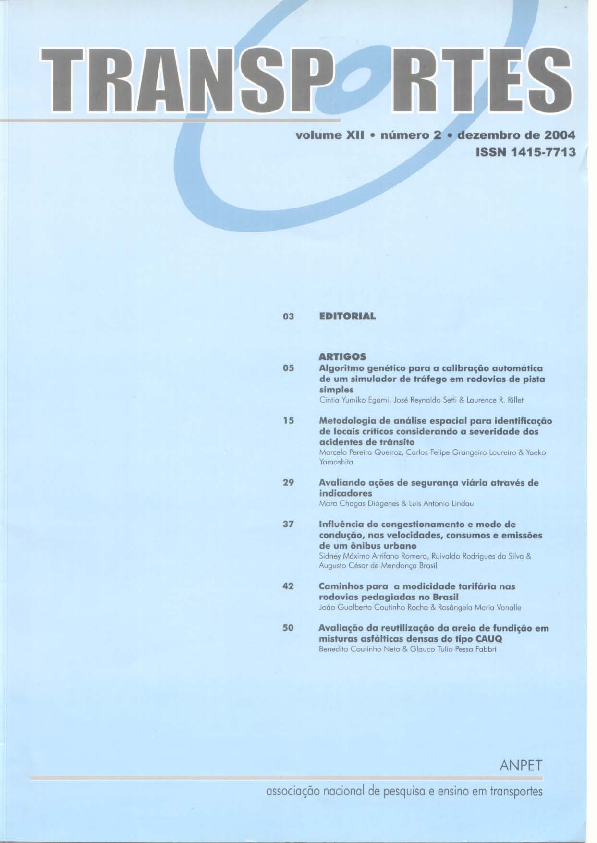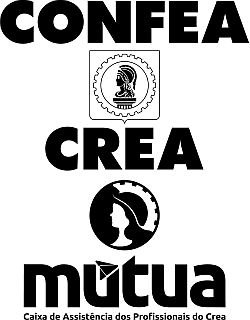Metodologia de análise espacial para identificação de locais críticos considerando a severidade dos acidentes de trânsito
DOI:
https://doi.org/10.14295/transportes.v12i2.135Resumo
Este artigo descreve e aplica uma metodologia de análise espacial para identificação dos locais críticos de acidentes de trânsito com base no índice de severidade do acidente, permitindo ao analista selecionar a forma mais adequada para tratamento de cada local crítico na malha viária de uma cidade. Como principal ferramenta de análise, utiliza-se a rotina de agrupamento espacial do vizinho mais próximo a qual possibilita identificar e representar os locais críticos (interseções, trechos, corredores e áreas) de ocorrência de eventos espaciais em um mapa digital por intermédio do conceito de elipse de desvio padrão. Acredita-se que este trabalho apresenta uma significativa contribuição para a elaboração de novas metodologias de estudos de acidentes de trânsito que incorporem outras variáveis relacionadas aos acidentes, como volume de tráfego, e também outros eventos de caráter espacial que contribuem para a ocorrência deste grave fenômeno urbano.
Downloads
Downloads
Publicado
Como Citar
Edição
Seção
Licença
Ao submeter um manuscrito para publicação neste periódico, todos os seus autores concordam, antecipada e irrestritamente, com os seguintes termos:
- Os autores mantém os direitos autorais e concedem à Transportes o direito de primeira publicação do manuscrito, sem nenhum ônus financeiro, e abrem mão de qualquer outra remuneração pela sua publicação pela ANPET.
- Ao ser publicado pela Transportes, o manuscrito fica automaticamente licenciado sob a Licença Creative Commons CC BY 4.0. Esta licença permite o seu compartilhamento com reconhecimento da autoria e da publicação inicial neste periódico.
- Os autores têm autorização para assumir contratos adicionais separadamente, para distribuição não exclusiva da versão do trabalho publicada neste periódico (por ex.: publicar em repositório institucional ou como capítulo de livro), com reconhecimento da publicação inicial na Transportes, desde que tal contrato não implique num endosso do conteúdo do manuscrito ou do novo veículo pela ANPET.
- Os autores têm permissão e são estimulados a publicar e distribuir seu manuscrito online (por ex.: em repositórios institucionais ou na sua página pessoal) depois de concluído o processo editorial. Como a Transportes é de acesso livre, os autores são estimulados a usar links para o DOI do artigo nesses casos.
- Os autores garantem que obtiveram todas as permissões necessárias dos empregadores para a publicação e o licenciamento CC BY 4.0 do manuscrito, especialmente se o empregador possuir alguma reivindicação sobre os direitos autorais do manuscrito. Os autores assumem total responsabilidade por questões de direitos autorais relacionadas ao empregador, isentando a ANPET e a Transportes de qualquer responsabilidade relacionada.
- Os autores assumem toda responsabilidade sobre o conteúdo do manuscrito, incluindo as devidas e necessárias autorizações para divulgação de dados coletados e resultados obtidos, isentando a ANPET e a Transportes de toda e qualquer responsabilidade neste sentido.
Última atualização: 27/11/2025











